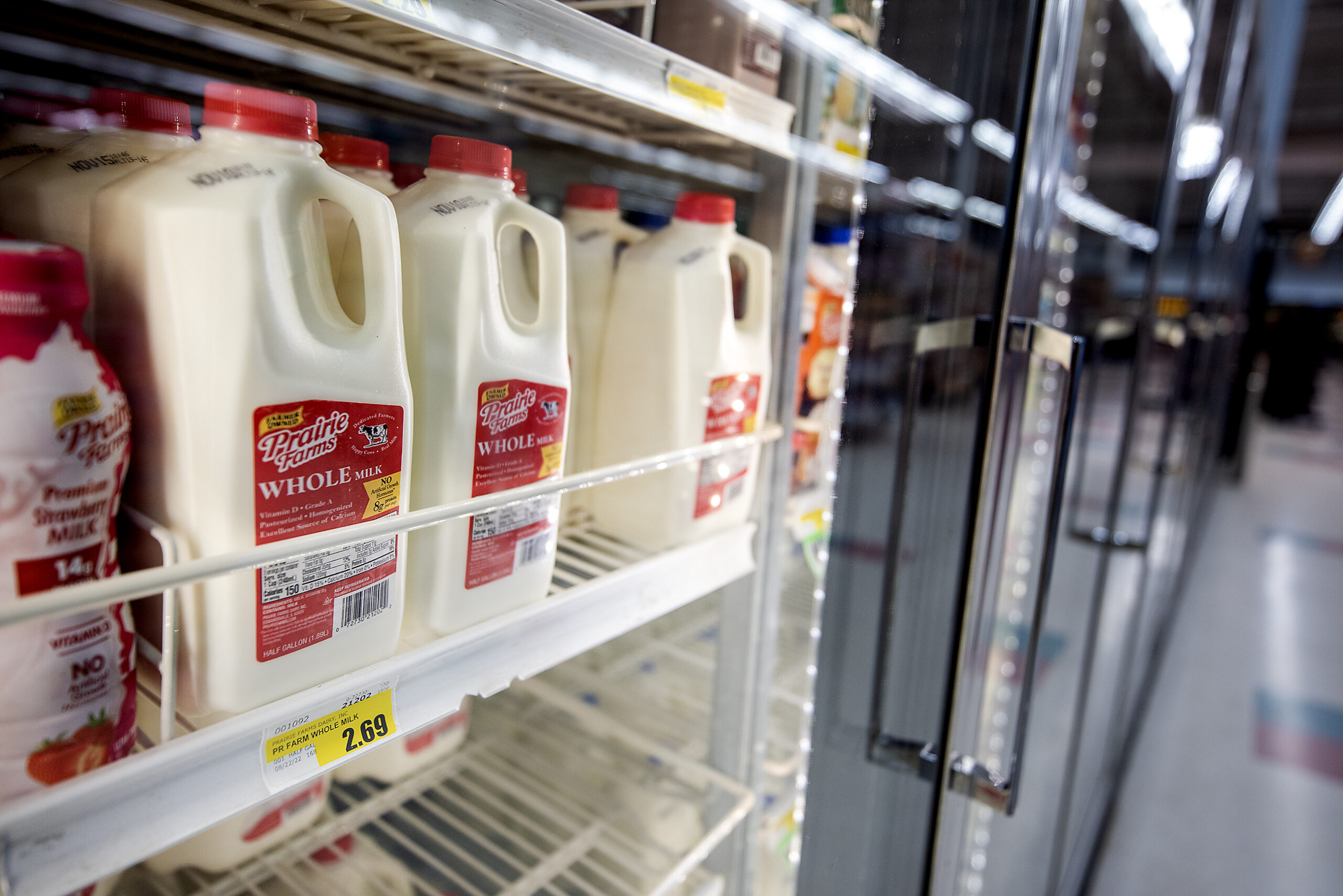Americans are paying about 5 percent more for goods and services now than they were a year ago, according to the U.S. Bureau of Labor Statistics.
But while inflation is high, it’s also coming down, says Thomas Walstrum, a senior business economist for the Federal Reserve Bank of Chicago.
Walstrum recently appeared on Wisconsin Public Radio’s “The Morning Show” to discuss shifts in the Midwest economy, wage growth, banking turmoil and the Fed repeatedly raising interest rates.
Stay informed on the latest news
Sign up for WPR’s email newsletter.
“There’s some parts of the economy that are really sensitive to interest rates and some that aren’t,” Walstrum said. “It takes time for interest rate policy to spread throughout the economy.”
The Fed district based in Chicago oversees most of Wisconsin.
The following has been edited for clarity and brevity.
Kate Archer Kent: How is inflation affecting our Midwest economy?
Thomas Walstrum: It’s high, but it’s coming down. Part of the reason that it’s coming down is because the economy is cooling. Part of the reason the economy is cooling is because the (Federal Reserve Bank) has raised rates to help slow the economy.
KAK: Cost of labor goes up in response to rising costs. Do you see wage inflation as a concern here in the Midwest economy?
TW: We’ve definitely seen wages going up quickly along with prices. They tend to move together. Wage growth tends to lag inflation, just a little bit. But when you actually take out the inflation, wage growth hasn’t been super strong.
If you look at the national data, state and local data, you can see that the labor market is really strong everywhere. I think the (federal) decision makers as well as many other forecasters would say that the labor market is so strong right now. It might have to cool some in order for inflation, both on the wage side and the price side, to come down. We’re hoping that the cooling is not super painful.
KAK: The Chicago Fed President Austan Goolsbee has previously told reporters, “A mild recession is a definite possibility for the American economy.” What is a mild recession?
TW: I think a mild recession means nothing like what we saw with the pandemic or the Great Recession. The long run unemployment rate that the (Federal Open Market Committee) participants see is about 4 percent. Four percent would be what’s going on when the economy is neither too hot nor too cold. We’re at about 3.5 percent unemployment right now.
I think a mild recession might be like 6 percent unemployment compared to 13 percent or 14 percent (like) we saw with the pandemic.
KAK: What are the repercussions of the banking turmoil on the Midwest economy?
TW: I think so far it appears that the steps taken by (federal banks) and other government agencies to stop the run on mid-sized banks seems to be working. But, there’s still a lot that we don’t know. When we had the financial crisis in 2008, it took a while for it to become clear where the problems were. It doesn’t look like we’re in a 2008 situation.
There’s an open question of how much credit perhaps that’s available to businesses to borrow and used to create growth. How much has that been pulled back? I think at the moment we don’t really know the answer, but it’s definitely something federal officials have been talking about.
KAK: In 2021, the Federal Reserve Bank of Chicago discontinued the Midwest Economy Index, which measured regional business growth for more than 40 years. What is your best gauge of the regional economy?
TW: One additional casualty of the pandemic was our Midwest Economy Index. Things are so volatile that the way we calculate that index ended up not really being sustainable after the pandemic. But that doesn’t mean we don’t have ways of keeping track of what’s going on.
I think that data, in my opinion, is the best data for keeping track of state economies. This would be the jobs numbers at the state level. National jobs numbers come out the first Friday of every month. Those are the ones I really pay attention to. I like those the best because they’re the most broad based, and they come out in a pretty timely manner relative to the reference period. I pay less attention to the unemployment rate numbers, which are from a much smaller sample size.
KAK: There is sentiment out there that mainstream economists are out of touch with how Americans are really doing. What is your take on that criticism?
TW: I think that it’s always fair to say that the economists, whether at the Federal Reserve System or anywhere else, could do a better job of thinking about how the economy is affecting people and how it’s directly affecting people’s lives.
I think that’s actually a big part of why we do some of our outreach efforts, such as the (Chicago Fed survey). We also do roundtables where we talk to people. We’re always interested in trying to hear from people about how they feel, about how they feel about the economy. We don’t have unlimited resources to talk to every single person. But it’s definitely something we’re interested in hearing about.
Wisconsin Public Radio, © Copyright 2025, Board of Regents of the University of Wisconsin System and Wisconsin Educational Communications Board.




